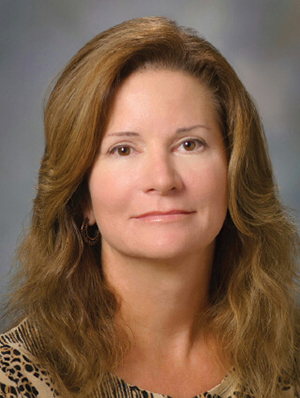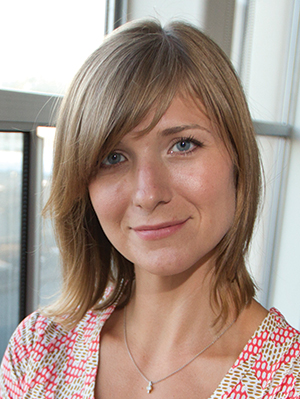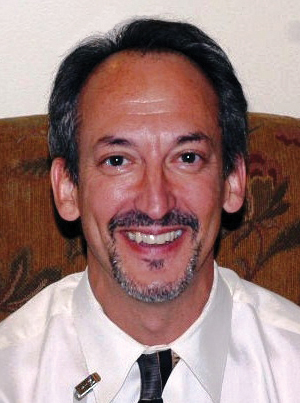My cancer is in remission. Can CT scans cause a recurrence?

Dianna Cody Director of Clinical Operations in the Department of Imaging Physics at the University of Texas M. D. Anderson Cancer Center in Houston. Photo © M. D. Anderson Cancer Center. Reprinted with permission.
DIANNA CODY: I’d be more concerned about not detecting cancer at its earliest and most treatable stage than I would about having repeated scans. The real risks of computed tomography (CT) scans, which use ionizing radiation to produce detailed images of areas inside the body, are small when you compare that to the reason why you are getting the scan.
Most cancer patients have follow-up annual CT scans after their treatment for five years. Medical imaging allows us to find the cancer before it grows. You need to weigh the small risk of radiation from the CT scans with the larger risk of having your cancer grow undetected.
It’s impossible to study the true risk of CT imaging in cancer survivors since so many variables are at play, but the U.S. Food and Drug Administration puts the risk of developing a fatal cancer from a CT scan at 1 in 2,000 for an average person. The same person has about a one in five lifetime risk of dying from cancer.
Theoretically speaking, even if radiation did pose a threat, a cancer left undetected and untreated could end your life long before the 20 to 30 years it takes for a potential malignant tumor to develop from radiation exposure. Most CT manufacturers are working to create better images with lower doses of radiation. Technology can already “sense” the amount of radiation needed depending on what body part is scanned. Newer advancements are aimed at giving the best image quality that you can coax out of the technology and software with reduced radiation exposure.
It’s also important to note that our bodies are exposed to background radiation every day. Lung cancer screening by a single CT scan may expose you to the radiation you would ordinarily receive over 200 days. A mammogram exposes a person to 7 weeks of ordinary background radiation exposure. In cases where you have a previous diagnosis—and even when you have a medically necessary procedure that requires a scan—a CT scan’s benefits far outweigh the risks.
CT SCANS AND CANCER RISK // Image Wisely offers resources and information about radiology for patients. // RadiologyInfo.org provides information about what to expect during imaging exams. // The American Cancer Society features facts and frequently asked questions about imaging tests.
I am undergoing cancer treatment. Is juicing healthier for me than eating fresh fruits and vegetables?

Alison Ryan Registered Dietitian at the Stanford Cancer Center in California. Photo © Norbert von der Groeben Photography
ALISON RYAN: Juicing can help cancer patients incorporate extra vegetables and fruits into their diets, but we recommend they eat whole vegetables and fruits as a foundation. Patients who are undergoing treatment should eat four or five servings of whole vegetables and two or three servings of whole fruit a day. (A serving is equal to a half a cup of chopped vegetables or fruit, or a cup of leafy greens.) Juices can provide an excellent way to get additional sources of vegetables and fruits beyond these recommendations.
A juicing machine extracts the liquid from the solid components of plant food. Juicing leaves a near pulp-free liquid. Blending, which is commonly confused with juicing, takes whole foods and chops them down. Because juicing vegetables and fruits results in less bulk and fiber, it can be used to increase intake for patients who have a low tolerance for eating whole vegetables and fruits because of their treatment.
If you are juicing, consider incorporating mostly vegetables into the mixtures. You can add a piece of fruit for flavoring, but vegetables are naturally lower in calories. An 8-ounce glass of orange juice contains approximately 112 calories. However, the same size of tomato juice is closer to 40 calories. When you put a number of fruits into a juicer, you could double or triple your caloric intake without even realizing it.
Remember as well that juicers strip the fiber content from vegetables and fruit, which can result in a more rapid rise in blood sugar levels. Guidelines from the American Institute for Cancer Research stress limiting or avoiding sugary beverages because of concern about sugar’s relationship to obesity and diabetes, which have been associated with increased cancer risk. While no study has established sugar alone as a cause of cancer or cancer recurrence in humans, we know that obesity, increased insulin levels and type II diabetes are risk factors for some cancers, and that high-calorie and sugary foods contribute to these health conditions. Thus, we recommend emphasizing vegetables as the foundation of your juicing recipes.
GETTING FRUITS AND VEGETABLES // The American Institute for Cancer Research offers research on different foods, including those commonly added to juicers. // OncologyNutrition.org provides advice for consumers and a searchable database of oncology nutritionists. // The U.S. Department of Agriculture features an online tool that lists calories and nutritional information for juices, vegetables and fruits.
My mother is being admitted to hospice care. What should we expect?

Scott Miller Medical Director at Family Hospice Inpatient Center – Mt. Lebanon and Associate Professor of Palliative Care and Ethics at the University of Pittsburgh Medical Center. Photo courtesy of Family Hospice
SCOTT MILLER: You may feel like you are giving up on your mom because she is entering hospice. You may even associate hospice with hopelessness. Yet the reality is that hospice services, whether performed at home or on a hospice unit, will help manage your mother’s physical and emotional symptoms, as well as the needs of your family.
A few studies have shown that some patients receiving hospice care may live longer than patients not on hospice with the same type of diagnosis. This may be because hospice emphasizes comfort and meaning, which can improve the patient’s quality of life, thereby increasing quantity of life. In addition, most hospice patients and their family members say the same thing once they are in hospice care: They wish they had come to hospice sooner.
As part of your mother’s hospice care, a team of professionals, including social workers, nurses, aides, chaplains and grief counselors, will use evidence-based approaches to help manage her symptoms and concerns. They may also help you coordinate care and medications to ensure your mother has everything she needs. The physicians and nurse practitioners who care for your mother will be specialists certified in hospice and palliative care, an expertise not available 10 years ago.
Patients who are admitted to hospice care must meet certain criteria and have less than six months to live, based on the natural progression of the disease. They can stay in hospice longer, so long as they continue to meet these criteria. Some patients have remained on hospice care for more than a year. In addition, your mother can choose at any point to come off hospice care if she decides she would like to seek more aggressive treatment.
Some words of advice for choosing hospice care. If you are caring for your mother at home, make sure hospice services are available 24 hours a day so that you can call your hospice provider at any time. You should also check to see whether there is an inpatient hospice unit available in case your mother’s condition worsens. This may not be an option depending on where you live, but it can be an easier transition for your mother if she needs more intensive care. It may also be a good idea to meet with hospice personnel to explore good personality fits and ensure they will meet your needs.
END-OF-LIFE SUPPORT // The National Hospice and Palliative Care Organization provides resources for making decisions and a searchable database of providers. // The Pancreatic Cancer Action Network offers a list of questions to ask hospice providers before choosing a hospice program.
Cancer Today magazine is free to cancer patients, survivors and caregivers who live in the U.S. Subscribe here to receive four issues per year.




